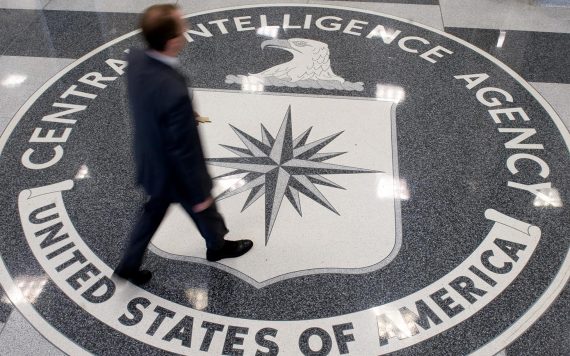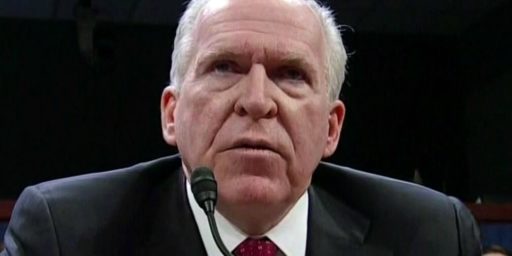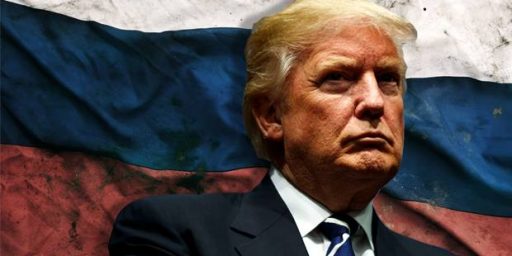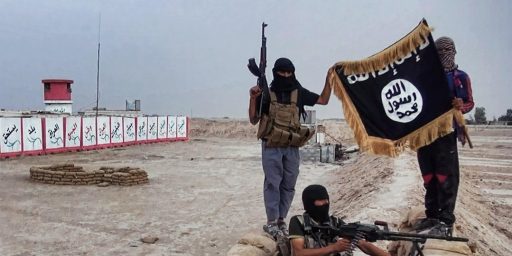CIA Director Proposes Radical Reorganization
The CIA has always separated its core spying and analysis functions; that may soon change.
The CIA has always separated its core spying and analysis functions; that may soon change.
WaPo (“CIA Director John Brennan considering sweeping organizational changes“):
CIA Director John Brennan is considering sweeping organizational changes that could include breaking up the separate spying and analysis divisions that have been in place for decades to create hybrid units focused on individual regions and threats to U.S. security, current and former U.S. intelligence officials said.
The proposal would essentially replicate the structure of the CIA’s Counterterrorism Center and other similar entities in the agency — an idea that reflects the CTC’s expanded role and influence since the Sept. 11, 2001 attacks.
U.S. officials emphasized that the proposal is in its preliminary stages, and could still be scaled back or even discarded. Already the idea has encountered opposition from current and former officials who have voiced concern that it would be too disruptive and might jeopardize critical capabilities and expertise.
But if Brennan moves forward, officials said, the changes would be among the most ambitious in CIA history — potentially creating individual centers focused on China, Latin America and other regions or issues for which personnel are now dispersed across difference parts of the agency.
Essentially, the CIA has four directorates: the National Clandestine Service, which conducts operations; the Directorate of Intelligence, which does analysis; and directorates for Science & Technology and Support. Like the military organizations after which the CIA was modeled (its predecessor was the WWII OSS, after all) everyone else exists primarily to support the guys at the tip of the spear—the NCS. But the DI additionally analyzes the raw intelligence gathered by the operators to help guide the president, the National Security Council, and (ostensibly, anyway) Congress make decisions.
Brennan’s plan would upend all that:
[R]ebuilding its sprawling bureaucracy around a model that relies on “centers” that combine analysts, operators, scientists and support staff. The agency has for years employed that approach on its most daunting assignments, including efforts to slow the spread of narcotics, illicit weapons and nuclear arms.
The trend has accelerated over the past decade, embodied by the massive growth of the Counterterrorism Center. With thousands of employees, a presence in dozens of countries and its own fleet of armed drones, the CTC, as it is known, has come to be regarded as an agency unto itself.
Many attribute the CTC’s success against al-Qaeda to its fusion of disciplines, with analysts who have detailed knowledge of terrorist networks working directly with the operators charged with dismantling them.
“It is a formula that has worked to create focus and extraordinary energy” against al-Qaeda and other important targets, said former CIA director Michael V. Hayden, who recently met with Brennan’s committee to discuss the reorganization plans. “The challenge is organizing the entire agency along those lines.”
The rationale behind the CTC-style model is straightforward and compelling:
Brennan appointed an internal CIA committee in September to evaluate the proposal as part of a broader review of the agency’s structure. In a message to the agency’s workforce, he cited the “rising number and complexity of security issues” such as the continued threat of al-Qaeda, civil war in Syria and Russia’s incursions in Ukraine.
“I have become increasingly convinced that the time has come to take a fresh look at how we are organized as an agency and at whether our current structure, and ways of doing business, need adjustment,” the message said, according to portions that were obtained by The Post.
Brennan did not delineate any specific plans, but he expressed concern that existing divisions undermine the CIA’s effectiveness at a time when “the need for integration has never been greater” and more of the agency’s missions “cut across our organizational boundaries.”
Former officials said Brennan’s interest in organizational change is driven in part by frustration with the struggle to strengthen U.S. intelligence on the crisis in Syria, which has morphed from a civil war to an incubator for terrorist groups.
But it’s not a slam dunk, either:
Hayden said he warned the panel against going too far in dismantling the directorates without having a clear plan for how the agency will replace what they have done for decades: recruit and train analysts and case officers with highly specialized skills, cultivating careers and expertise with a focus on the long term.
Hybrid organizations such as the CTC tend to be “consumed with the operational challenges of the moment,” Hayden said. “But you also have to pay attention to creating the basic skills, knowledge and databases” — areas of tradecraft that have been the domain of traditional directorates.
Others cited additional concerns, including the potential for analysts’ judgment to be clouded by working so closely with the operations side. “The potential for corruption is much greater,” said a former U.S. intelligence official who worked at the CTC. “If you have analysts who are directly involved in helping to guide operations, there is the possibility for them to get too close to the issue and be too focused on trying to achieve a certain outcome.”
While I lack the experience and expertise to have a strong position on this, my instinct is to side with the skeptics. I’m not all that worried about the issue of “getting too close to the issue,” given that CIA analysts are naturally independent minded and likely to push back hard at attempts to sway their analysis. But the focus would naturally shift even more towards to the needs of current operations, leaving even less time for strategic forecasting. While CIA has famously failed to predict major events—most notably the rapid collapse of the Soviet Union—the unique value of the DI is that it generally does an extraordinary job of looking several steps ahead. That’s not a capability we can afford to lose.
Further, it’s not obvious what problem the reorganization is trying to solve. The Syria situation is a hot mess, to be sure, and analytically challenging. But, presumably, that’s at least partly a function of CIA’s Middle East resources having been focused so long on Iraq, al Qaeda, Iran, and other pressing situations with Syria on the back burner. There’s nothing preventing organizing a Syria task force across Directorate lines now
UPDATE: One possible way for this to work is to simply break up the two core functions of CIA entirely. That is, it’s never been obvious to me why one agency should simultaneously be our premier spying and clandestine operations arm while at the same time performing the seemingly completely unrelated mission of performing academic analysis, aided with the help of sensitive compartmented information, for policymakers. A CTC-like model would essentially relegate analysts to a support the operators role. That may not be a bad thing IF we then place analysts charged with medium- and long-range forecasting into a separate unit altogether, such as an enhanced National Intelligence Council.







As a former annalist and agent of the DIA I am a bit prejudiced but the CIA has rarely been right about anything. At the DIA we predicted the collapse of the Soviet Union and the CIA laughed at us. Blow back from misguided CIA operations are responsible for many of our past and present foreign policy problems – think Vietnam and Iran.
DIA was radically restructured by the just departed director, LTG Mike Flynn. It was a complete FUBAR (as most DIA things are). I think Brennan ought to ask his buddies at the DIA leadership how things are going with their re-org before proceeding.
Now to the important question: why hasn’t Brennan been fired?
@Dave Schuler: Same reason he isn’t in jail, I suppose. But the man is absolutely correct in this case: the CIA desperately needs more decentralization and less oversight and accountability than it has today.